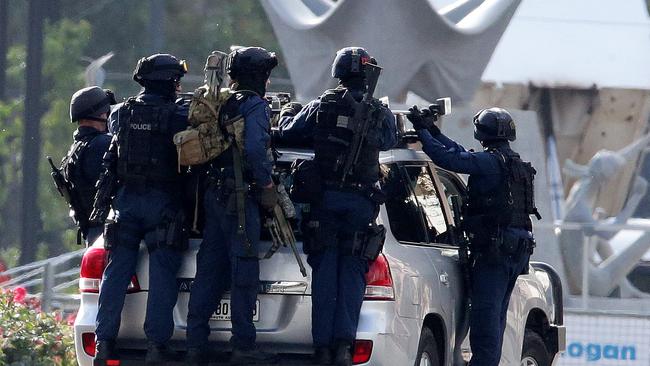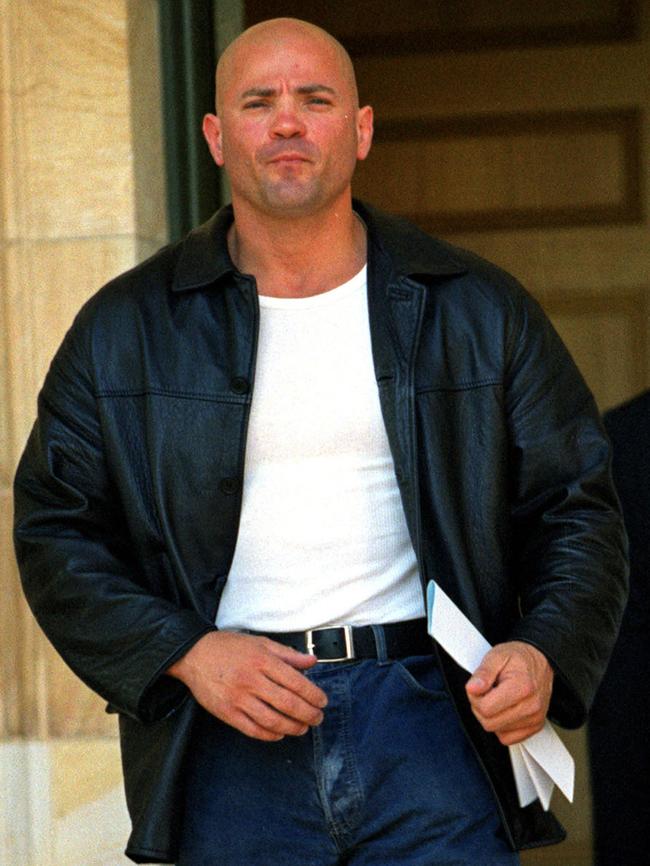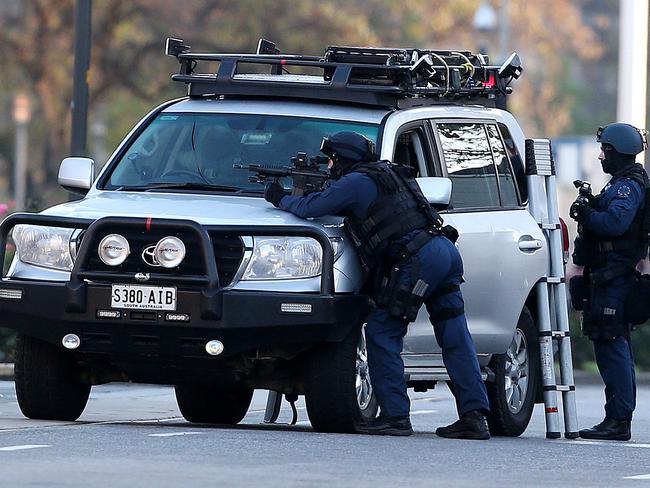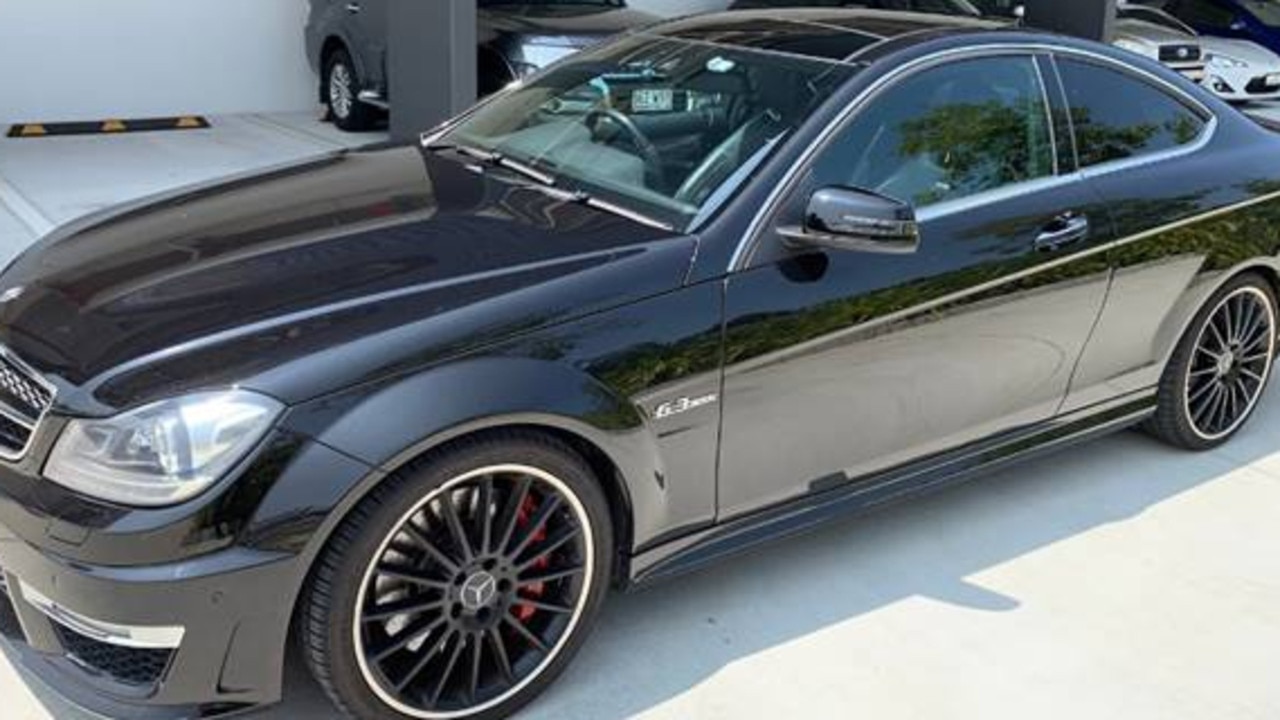Rodney Clavell siege: SA Coroner’s inquest — Day 1
HIGH-RANKING police devised an intensive manhunt for Rodney Clavell over an air rifle found inside a stolen car — both of which were ultimately found to have no connection to the fugitive who committed suicide during an Adelaide siege. Now the actions of those senior officers are being questioned in the Coroner’s Court.
Law and Order
Don't miss out on the headlines from Law and Order. Followed categories will be added to My News.
- Coroner clashes with SAPOL over withheld Clavell evidence
- Armed and dangerous: What an associate said about Clavell
- End of the siege — read our coverage from 2014
HIGH-RANKING police devised an intensive manhunt for fugitive Rodney Clavell over an air rifle found inside a stolen car — which were found to have no connection to him after his suicide, the Coroner’s Court has heard.
Deputy state coroner Anthony Schapel on Friday opened the inquest into the suicide of Clavell inside Marilyn’s massage parlour on King William St on June 5, 2014.
Clavell, 46, took his own life after being holed up inside the brothel for more than 11 hours, the culmination of a public manhunt that began more than a fortnight earlier.
Counsel Assisting the Coroner, Ahura Kalali said the inquest would examine why high-ranking police put such a priority upon Clavell, who had recently been acquitted of a serious assault and was “a free man”.
Mr Kalali said Clavell had been spoken to several times when found in the back of cars but had been polite to officers and not charged with any offences.
He said police had suspicions, but no evidence, that Clavell was one of two people who ran from a stolen Toyota RAV4, which was found to have an air rifle inside.

“In essence this strategy was in relation to Rodney Clavell’s property being found in two vehicles and from forensics linking him to that car, and because in one of those vehicles there was an air rifle,” Mr Kalali said.
“Strategies were being discussed and developed at the highest levels of SAPOL … the subsequent approach to the media and public seeking assistance to locate Mr Clavell ... turned out to be a public manhunt.
“Ultimately, no forensic links were found between Mr Clavell and the air rifle.”
The inquest heard that in early May 2014, Holden Hill police were leading an internal operation to use surveillance and phone taps to find Clavell.
However, on May 11, a senior constable received a call to a broken-down vehicle and spoke to three people, including Clavell and a female friend.
The inquest heard the senior constable “generously offered” Clavell and the woman a lift to Lobethal, so they could fix the car sooner, and chatted with the pair along the way, unaware that colleagues were trying to locate him.
“When he returns to the police station he checks the system and finds that Mr Clavell was a suspect for the illegal use (of a motor vehicle) but as far as the officer was concerned he was not flagged.”
Holden Hill police were told that covert operations had failed to find Clavell, at which point he was flagged in the police system as wanted.
“Of course the reality of the situation is that while Holden Hill were making efforts to find Mr Clavell and treating him as high risk and requesting STAR Force officers, good old-fashioned community policing had Mr Clavell in the back of a police car, being cooperative and civil,” Mr Kalali said.
“Perhaps he could have been spoken to by (that) officer about those offences and matters resolved civilly, but that did not happen.”

By May 19, the search was handed to the Serious and Organised Crime Branch, which was headed by Detective Superintendent Peter Harvey.
Assistant Commissioner Paul Dickson held a tactical meeting and was briefed on the Clavell situation, and designated Supt Harvey as in full command of the search.
Mr Kalali said during that briefing, Supt Harvey said he became aware of information that Clavell was planning a robbery, but said there were scant details.
“Supt Harvey states that on the 19th of May he also became aware that Mr Clavell was also suspected of, and I will quote here, ‘being in the process of planning a robbery in company with another person’,” he said.
“Mr Clavell is planning to commit a robbery with a man, the identity of whom is not known, and it is not known when, where or what type of robbery is being planned.”
On May 20, warrants for Clavell’s arrest were issued for the offences of illegal use of motor vehicle and breaching a firearms prohibition order, over suspicions he was connected to the air rifle.


Mr Kalali said police then launched a public campaign through the media, issuing a statement including statements that Clavell was dangerous to the public
“There is no explanation as to why Rodney Clavell … was deserving of such a media campaign, and why this matter was to be handled by the Serious and Organised Crime Branch,” he said.
“Why was it that this matter was coming to the attention of some very senior ranking police officers, such as Mr Dickson … why was the media campaign commenced?
“What was the effect of the decision to go public on Rodney Clavell, we can only speculate on,” Mr Kalali said.
“Did Mr Clavell see himself as being targeted unfairly by SAPOL? Did he think he was being singled out? Did that make him more dangerous? They are all reasonable questions. And add that to the media campaign, and this story was not going to go away.”
In the ensuing weeks, more than 100 police officers would raid at least 80 homes and properties across Adelaide but found no trace of Clavell, including an incident on South Tce in the city when Pulteney Grammar school was sent into lockdown as reports Clavell was in the area.
During that time, Clavell was alleged to have fired a shotgun when robbing a man of his car in the southern suburbs and to have brandished a firearm in a home invasion with two other people.
Mr Kalali said in media statements, police had falsely claimed that Clavell had fired a shotgun at police during a 2004 incident in which he was shot twice while trying to escape STAR Group officers in a 12-tonne grader in the Adelaide Hills.
But he said the judge who jailed Clavell for that incident noted that the only bullet inside the shotgun had been discharged accidentally when the gun was pointed at himself, and that Clavell’s motivation was to either shoot himself or have police shoot him, rather than intending to harm officers.
Mr Kalali said such statements heightened the public’s fear and exaggerated the danger Clavell posed.
“The public would have had no doubt feeling that if Rodney Clavell was capable of shooting at police he was capable of anything,” he said.
The inquest is also taking evidence from the head of the Serious Crime Task Force, Detective Inspector John Gerlach, who told the court Clavell was well known as a dangerous criminal.
“He was a serious offender, committing robberies in the community and putting guns in people’s faces ... we needed to apprehend him for the safety of the community,” Insp Gerlach said.
The inquest continues.



